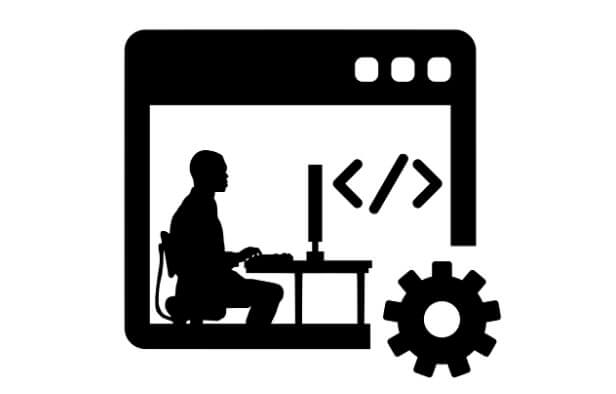Web application testing is vital to ensuring the reliability and quality of your software. In fact, testing is a requirement of every software project, including web projects.
Testing your web application is a crucial part of the web app development process. It plays a big role in making your application robust, well-performing, and bug-free. In fact, this is one of the most critical steps to take after the initial build.

What Is Web Application Testing?
Any program that runs in a web browser is a web application. It may be as simple as a message board or a contact form on a website. It could be as complex as a word processor or a multi-player mobile gaming app that you access over the Internet.
Web application testing is a software testing discipline that focuses on verifying the functionality and performance of web applications. The goal of web app testing is similar to other forms of software testing: find bugs that users might encounter so they can be fixed before release.
Manual Testing Vs. Automated Testing
Manual testing involves testing software by the use of the hand. This process is executed by a human tester who will manually run through a series of tests on the software. It can be performed in both web and desktop applications.
In manual testing, a tester first plans out what test cases to run and then begins executing those test cases on the application under test (AUT). The results of each test step are recorded as pass or fail, and bugs are reported when necessary.
On the other hand, automated testing is how testers write scripts that can automatically execute a series of test steps. In automated testing, the AUT runs with little to no intervention from the tester. Such automated testing can be performed flawlessly using free automation testing tools available in market.
This is possible because a separate program controls the AUT called an automation tool or automation framework that functions as the primary interface between the tester and the AUT.
The automation testing tool sends input to the AUT to simulate actions taken by users of the application, then retrieves output from the AUT to ensure that it matches expectations. These tests can be repeated repeatedly without having to be manually configured each time.
Why Automated Web App Testing?
Here are a few reasons why you should use automated web application testing for your next project:
- Time-saving. It saves time by automating repeated tasks, saving manual efforts, and improving the quality of test cases. Also, it saves a lot of time as compared to manual testing.
- Increase in test coverage. Automation helps in increasing test coverage, which improves the quality of software.
- Early defect detection. Automated testing detects defects at an early stage of SDLC, which results in bug-free software.
- Reliable and accurate results. It also helps achieve accurate and dependable results, thus providing more confidence in product delivery.
- Improved efficiency. The team’s efficiency increases as the focus are on other aspects like product improvement rather than spending time on repetitive tasks such as regression tests, deployment, etc.
The main challenges in the automation of web app testing include:
- Finding the right tool for your project
- Integrating the tool with your test automation framework and building process
- Ensuring that all elements on the web page are accessible by the automation tool
- Ensuring that the test cases can be executed across different browsers, operating systems, and devices
Types of Web Testing
Web application testing can be done manually or with the help of automation tools. These tests vary widely depending on the application’s functionality, architecture, programming languages, and technologies involved. Types of automation web testing include but are not limited to:
-
Functional Testing
Functional testing tests the core functionality of your application. You test that the correct buttons are present and that clicking on them leads to the correct actions. Any application part can be tested functionally, from the front end to the back end.
-
Performance Testing
Performance testing measures how long an action takes, like loading a page or searching for a record in a database. Performance testing is usually done with tools that simulate many concurrent users, so you can learn how your site behaves under load.
This type of testing means you can identify any problems before they become apparent to users. It also helps to improve a site’s loading speed which boosts user satisfaction and rankings for search engines.
-
Security Testing
Security testing, like penetration testing, checks how well your app protects against malicious attacks. You try breaking in as a hacker would.
This type of testing is important for any app handling sensitive data like credit cards. But, it’s also important for any app that connects to another server, since hackers can use vulnerable apps as stepping stones to reach other computers.
-
Usability Testing
The purpose of usability testing is to identify any errors in the navigation or design of a website that might make it difficult for users to use the site or find the information they want. As such, usability testing involves having users attempt tasks while a tester observes them. Any issues they encounter during these tasks should be documented and then fixed.
-
Cross-browser Testing
This web testing involves checking how well a website functions on various browsers, such as Chrome, Firefox, and Internet Explorer. A different version of each browser can also be used since some websites perform differently on older versions than on new ones.
How to Choose the Right Tool for Your Web Testing Needs

Source: Pixabay
Not all test automation tools are created equal. When you’re choosing the right one for your needs, you have to consider factors such as:
- Functionality. This is an essential factor to consider when choosing an automation tool. You’ll want a tool that provides full coverage for all your testing needs.
- Cost. If you’re on a tight budget, buying an expensive commercial testing tool is likely out of the question. Likewise, if you’re planning to hire automation testers who need to use this tool, make sure it’s within your budget.
- Ease of use. Choose a tool that is easy to use or you are familiar with. If it’s hard for testers and developers to understand, they’re less likely to use it effectively.
- Integration. Often you’ll want to combine tools for different types of testing into one cohesive whole.
- Maintenance. The most important thing you need to consider when choosing a tool is whether or not it’s going to be sustainable.
Conclusion
Testing is a vital part of any development process, including integral components like web applications. It ensures quality and keeps the project running smoothly for users. If your web app is shipping with bugs, you’re likely going to be the one paying for it in the long run. Take testing seriously and strive to automate it. While website automation testing is hugely important, it’s only one piece of the puzzle when creating and maintaining a high-quality web app.
Reach out to us if you need advice and support about web or software quality assurance.
Other Related Articles You Might Be Interested In








